The Classified Powershift hub has been garnering plenty of attention since its launch last year – the two-speed hub replaces your front derailleur, promising quicker, more reliable shifting and a more aero setup.
Once I’d got through the installation process, the hub’s performance impressed, with instantaneous shifting between its two ratios and adequate performance across its proprietary 12-speed cassette.
My hub was built into Classified’s G30 carbon gravel rims.
You can also purchase the hub to be built into your own custom wheels, buy it as part of a partner brand’s wheels (such as Parcours or Hunt’s road and gravel wheels range), or get it pre-installed on a new bike.
The obvious sticking point of the system is the price, which may be a tough pill to swallow, and navigating the various options on offer from the Tom Boonen-backed brand.
Classified Powershift hub details
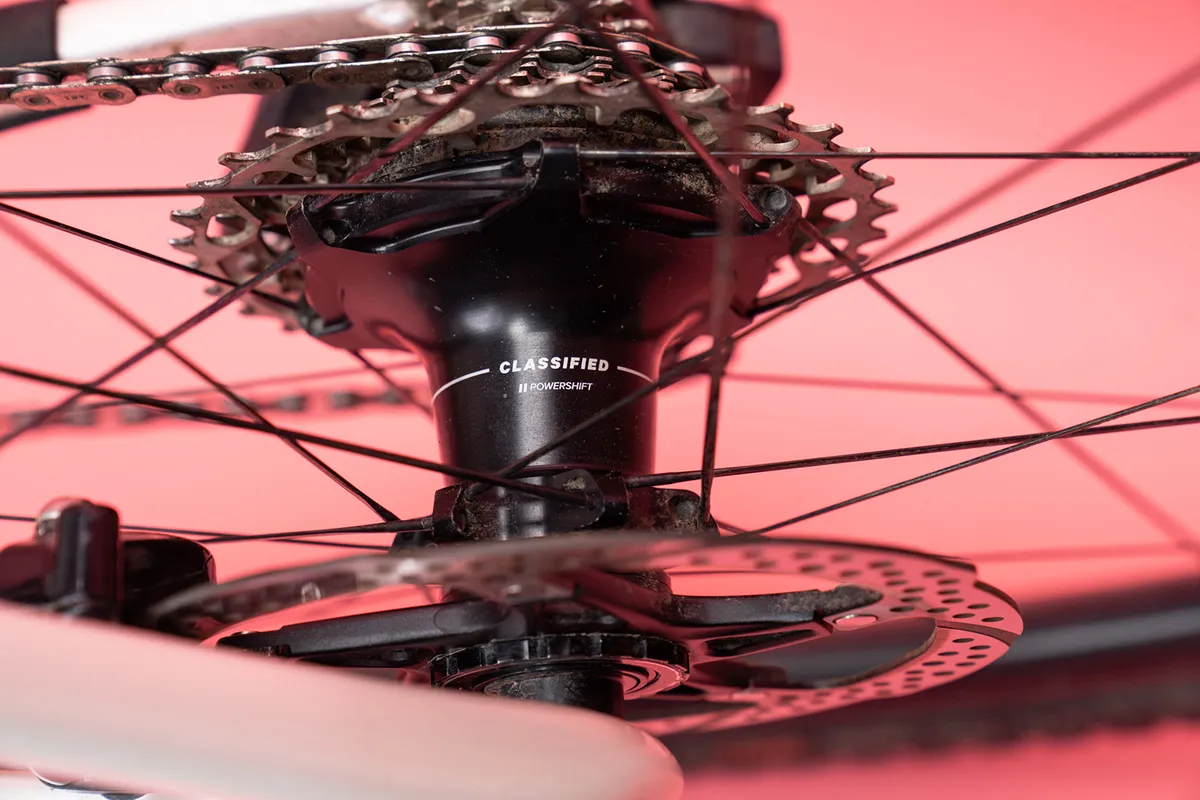
The Classified Powershift is a two-speed internal gear hub that offers the range of a 2x system, while doing away with the front derailleur.
The hub holds a planetary gear, offering a 1:1 ratio (the cassette rotates at the same speed as the hub shell, as per a normal hub) or a lower 1:0.686 ratio (the cassette rotates at a faster speed than the hub shell, offering an easier gear).
This ratio was used to mimic a regular road compact chainset ratio of 50:34.
Therefore, a given chainring size also gives an equivalent lower gear, which can be approximated into a second, smaller chainring size. Some examples are below.
- 60t ring = approx. 41t chainring in low gear
- 52t ring = approx. 36t chainring in low gear
- 40t ring = approx. 27t chainring in low gear
- 34t ring = approx. 23t chainring in low gear
- 32t ring = approx. 22t chainring in low gear
It is not recommended that the 142mm Powershift (as tested) is used with a chainring smaller than 38t (with an 11-32t cassette) as the internal torque rating is lower. However, the 148mm MTB-focussed hub can be used with smaller rings.
Classified’s hub is then fitted with one of its own cassettes, in a wide range of ratios.
Classified claims its hub is more reliable than a front derailleur, thanks to its sealed construction.
While a 1x setup can force a chain into fairly extreme angles compared to a 2x setup, Classified says using its setup with a larger chainring and its own cassettes can result in less frequent cross-chaining. This is because it enables you to remain in the centre of the cassette for more time.
Using a single, larger chainring can also increase efficiency because the smaller ring used in a typical 2x setup is less mechanically efficient.
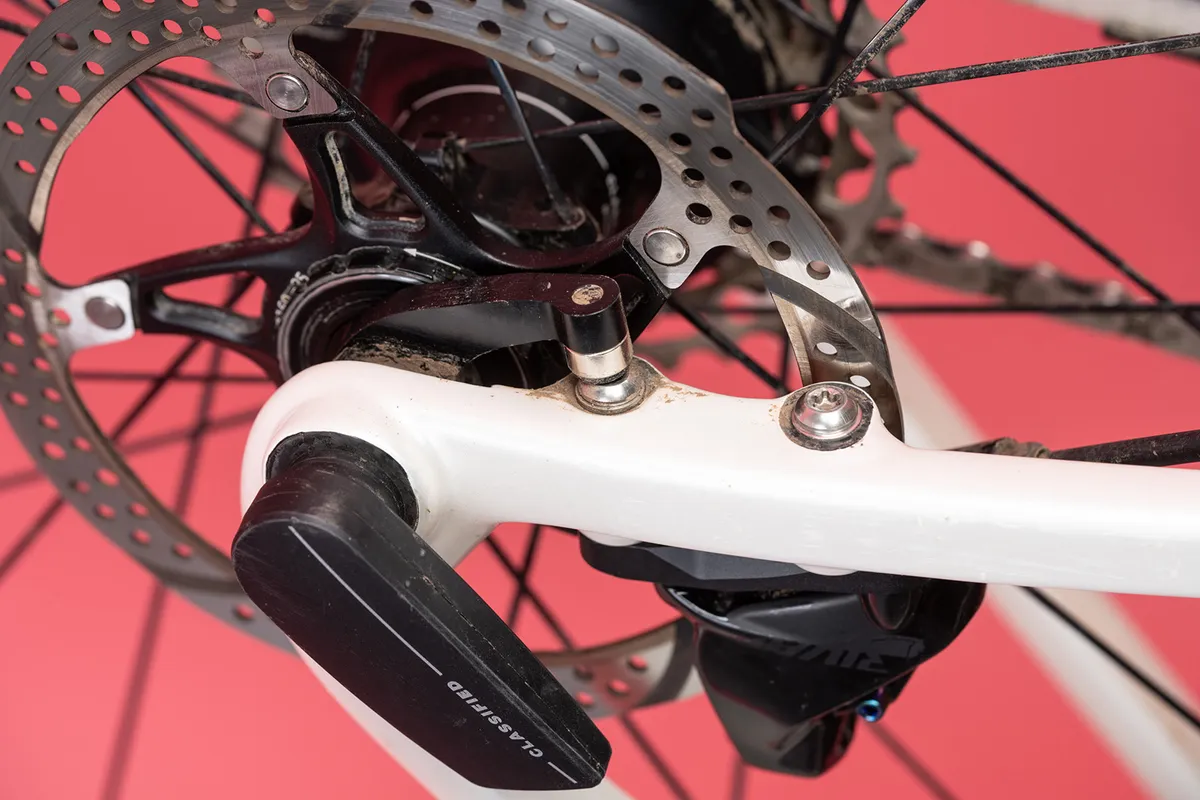
One of Classified’s sponsored riders has reportedly done 35,000km on the system, without needing to swap the cassette or chain, while also requiring no maintenance of the hub.
The hub can also reportedly shift in 150 milliseconds under loads of up to 1,000 watts. Classified claims the hub is impervious to water ingress, boosting reliability.
The hub is rated to be used with electric bike motors up to 70Nm of output. This excludes most ‘full-fat’ eMTB motors, but should work with the bulk of mid-weight motors and those commonly found on the best electric road bikes or e-gravel bikes.
Depending on the setup you're replacing, it can be lighter, while the lack of a front derailleur can improve aerodynamics.
Classified claims a 99.8 per cent efficiency in the 1:1 gear ratio, with the 0.2 per cent drop due to bearing seals. It claims a 99.2 per cent efficiency in the lower gear, with the loss due to the planetary gear mechanism.
Classified has test rigs developed by engineers to measure this, and have released a White Paper, making public its testing protocol and results.
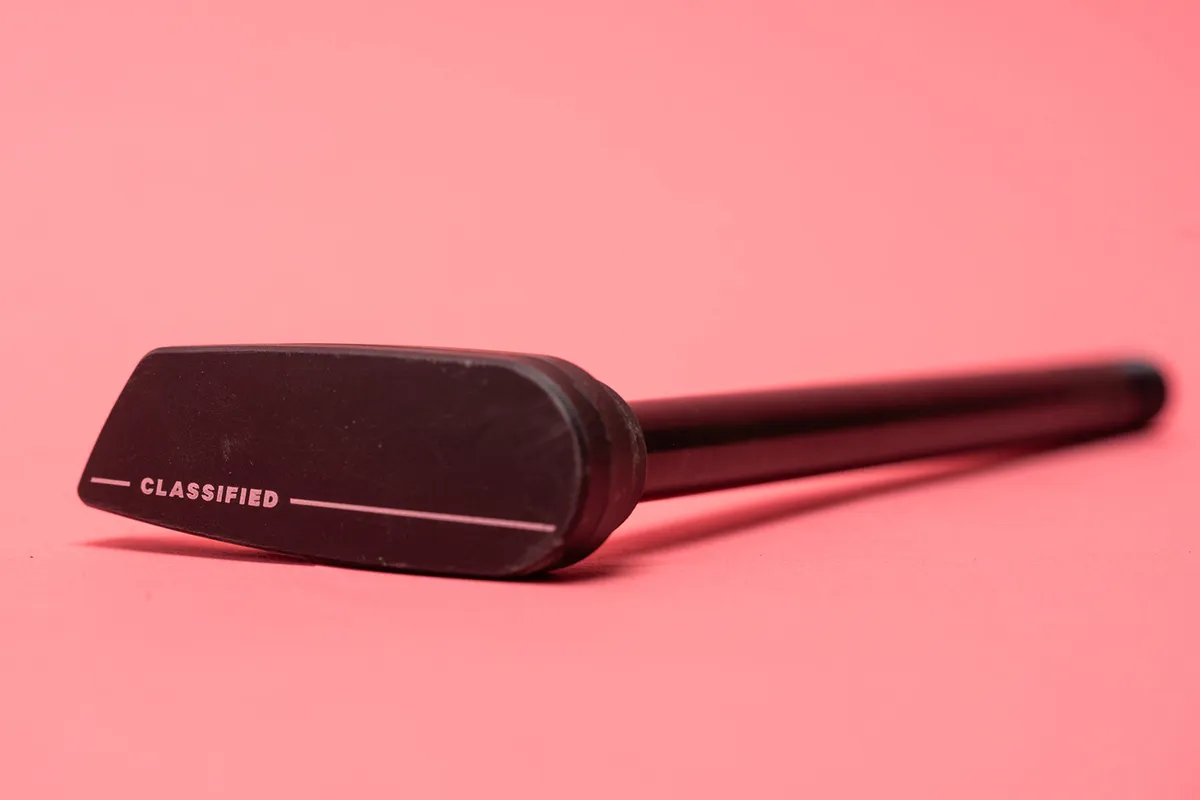
All hubs are calibrated and tested before leaving the factory.
While the mechanics of the internals are a protected secret, the brand told me its hub has one ‘sun’ and six ‘planets’, far fewer than other internal gear hubs, leading to this efficiency.
Materials borrowed from the automotive industry, where the designers used to develop gearboxes for the PSA group of vehicle makers, add to internal durability.
A satellite shifter, located on your bars, sends a wireless signal to the Classified rear axle. This shifts the planetary gear from one ratio to the other.
An induction circuit transfers the energy from the axle to the hub to shift the gear.
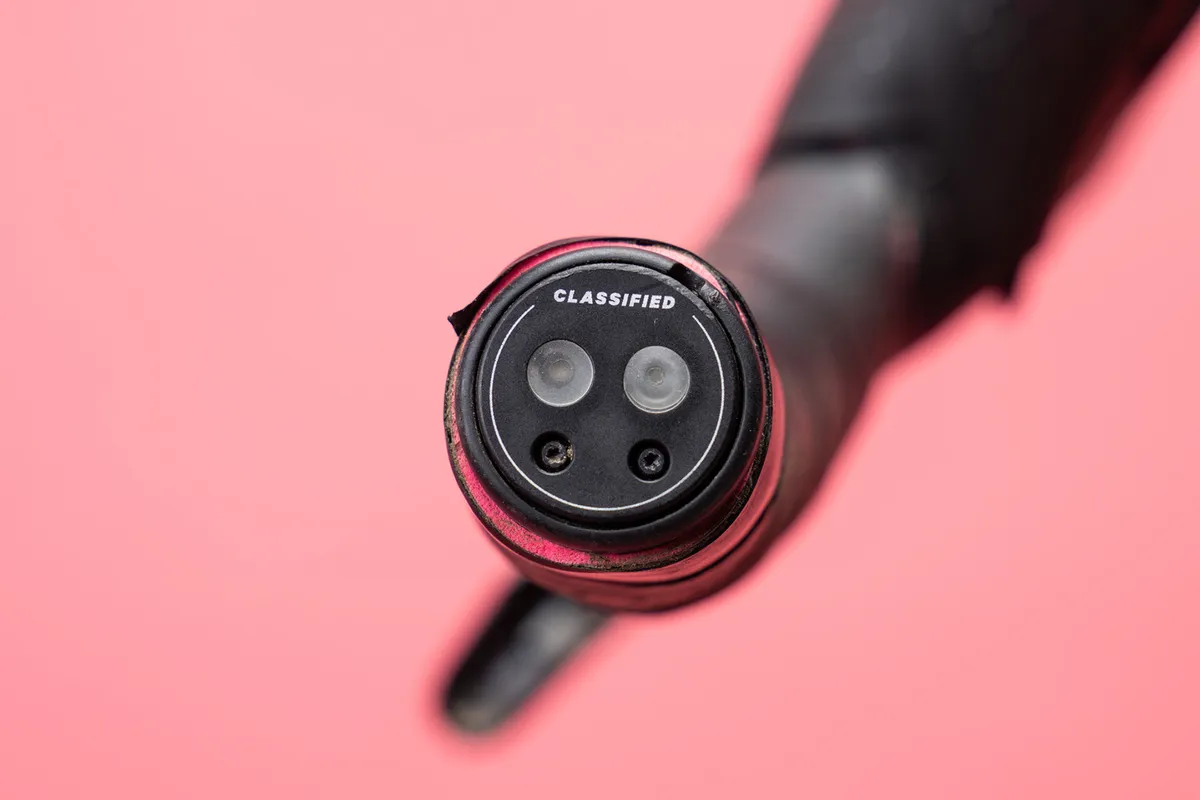
The shifter is powered by a CR1632 coin battery. This is fitted in the wireless module, which fits into the bar end plug. A rechargeable battery is fitted in the thru-axle. This powers the hub through contactless energy transfer, so there’s no battery in the hub itself.
The system can be used with all existing electronic or mechanical groupsets on the market because it uses either Classified’s own handlebar unit and sprint button for drop-bar applications or wireless Ringshifter for flat-bar applications.
The hub is built for Center Lock disc rotors – sorry six-bolt fans.
Classified offers a range of wheel products, for road, gravel and mountain bikers, with an urban offering on its way too.
Classified hub cassette ratios
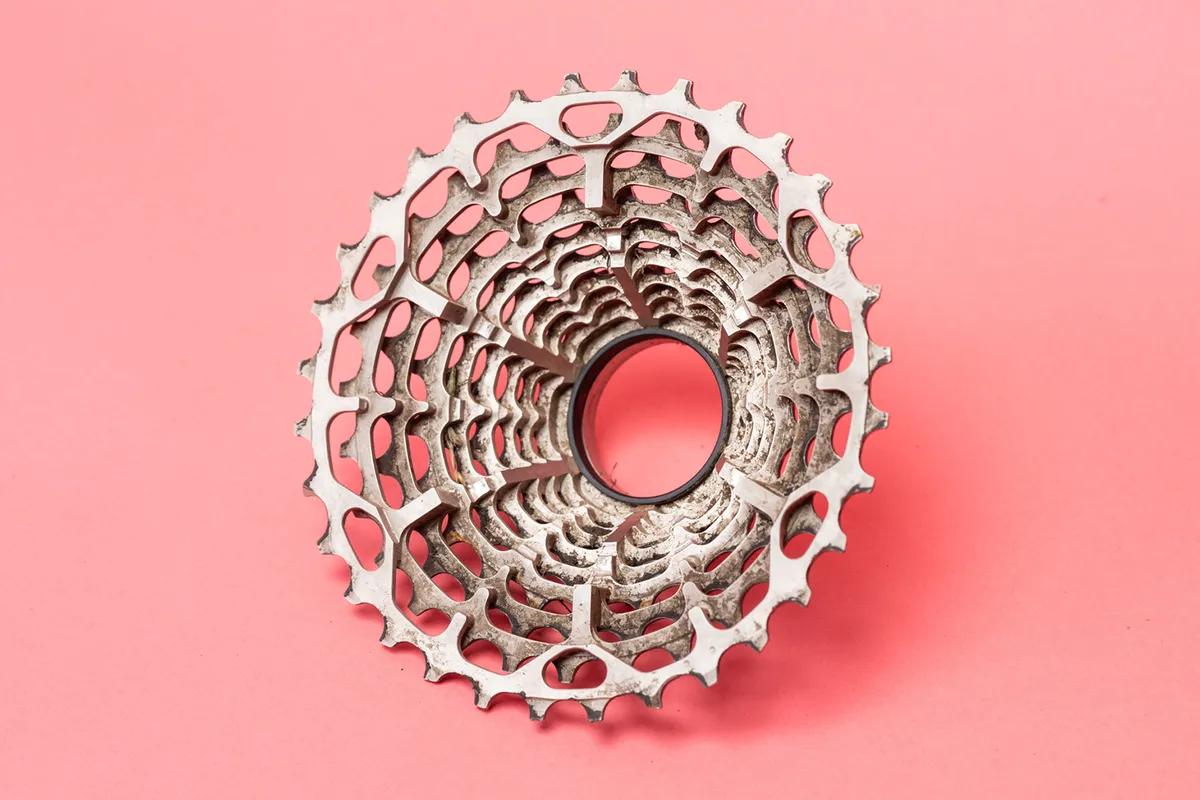
Classified’s own one-piece cassette is required to use the system (there’s also a belt-drive sprocket option for urban bikes).
At €200, it's likely the cheapest one-piece cassette on the market. Classified was coy about the exact material used, however it’s a hardened steel material, that thus far has resisted any corrosion.
Various options are available, as listed below, along with the total gear range when both hub gears are included.
| 11-speed ratios | Gear range | 12-speed ratios | Gear range | 13-speed ratios | Gear range |
|---|---|---|---|---|---|
| 11 - 27 | 358% | 11 - 28 | 371% | 11 - 36 | 477% |
| 11 - 30 | 398% | 11 - 30 | 398% | ||
| 11 - 32 | 424% | 11 - 32 | 424% | ||
| 11 - 34 | 451% | 11 - 34 | 451% | ||
| 11 - 40 | 530% |
In comparison, a mountain biker’s 10-52t cassette (SRAM) offers a 520 per cent range.
A typical road drivetrain with a 2x 50/34 chainset and 11-32 cassette gives a 428 per cent range.
On gravel, an average 2x 46/30 crankset and 11-34 cassette gives a 474 per cent range.
I’ve tested Classified’s carbon gravel G30 wheelset, which costs €2,599.
The company also sells the system via partner wheel brands, with a €1,299 upcharge.
Alternatively, you can buy the whole hub assembly, to build into your own wheels, for €1,399.
Classified Powershift G30 weights and specifications
- Rear wheel: 1,208g
- Hub (claimed): 493g
- Cassette (11-32): 196g
- Axle: 72g
- Shifter button assembly: 21g
- Front wheel: 744g
- Spoke count: 24
- Rim depth: 30mm
- Internal rim width: 23mm
- External rim width: 29.5mm
Classified Powershift installation
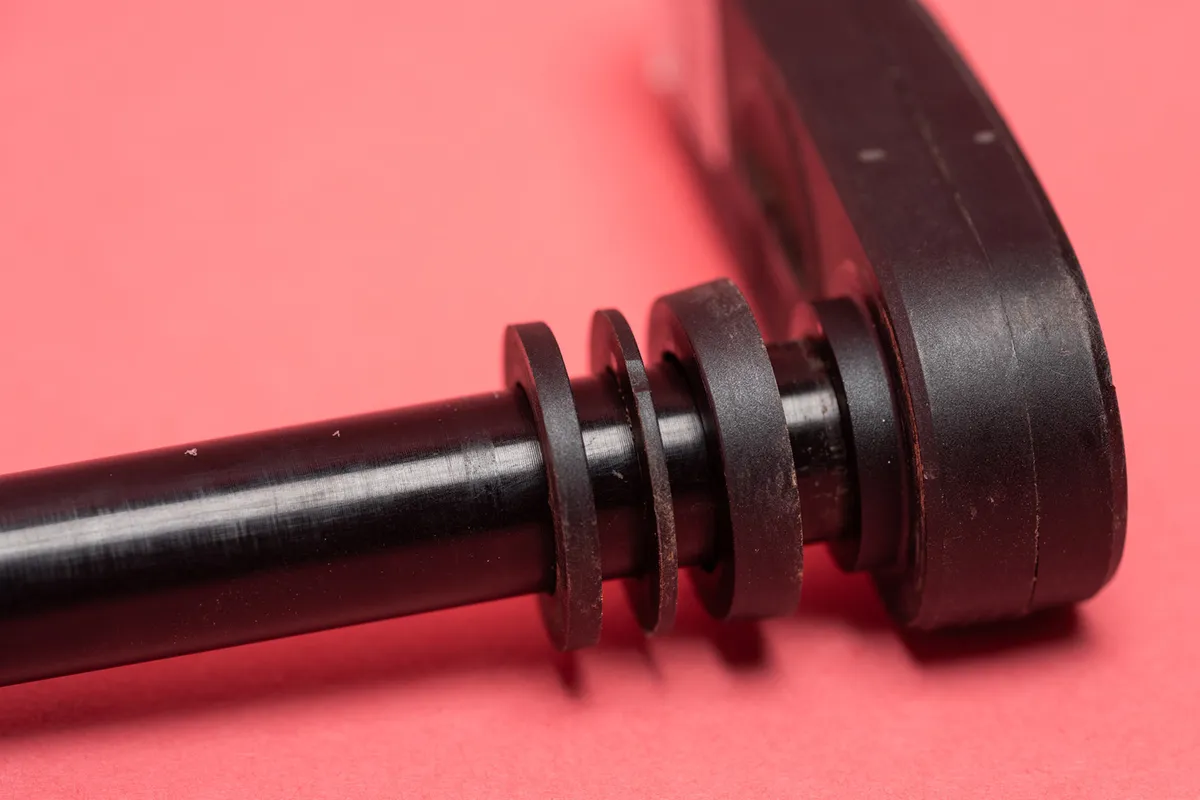
How the installation process works for you will depend on how you purchase a Powershift hub.
If you buy it already installed, your job is easy. If you buy a hub alone, it’ll be more complex.
There is a full guide from Classified online, which talks you through the process fully – it’s worth watching this in full before going ahead.
Initially, though, if you're purchasing a set of wheels to fit to your current bike, you will need to take some measurements of the dropouts.

This is because there are five possible thru-axle lengths and a range of threaded ends available. Obviously, you'll need to get the correct thread for your bike, but the length of the axle is also important, in order for the axle to communicate with the hub properly.
A metal guide is available, which you push through the non-driveside axle and pull back to match markings on the guide and then take a reading. This indicates which axle length you need.
I ended up using a paper printout of the guide, which was less convenient – contact your vendor to ensure you receive the metal guide.
The fit is fine-tuned by altering the threaded ends and axle spacers or end caps.
I wouldn’t say the process is the slickest thing ever. However, with a bit of time and thought, it’s pretty easy to understand and very achievable, so don’t let this put you off.
It is worth noting that Classified advise that, if buying via a dealer, that they fit the product for you, to ensure the correct spacers etc are sourced from the outset.
Fitting the Classified axle

The axle’s lever, which doubles as the battery unit and receiver of the signal from the shifter, needs to tighten against the dropout so it’s pointing towards the handlebars. This, again, may take a couple of attempts to get just right.
A small torque arm is required for the planetary gears to shift inside the hub. On my bike, this pushes against the bolt of the Flat Mount brake on the underside of the chainstay.
Adaptors are also available for Post Mount brakes, and for frames with an appropriate fixing on the inside of the chainstay.
The bar plug is perhaps the most time-consuming part to fit.
You’ll need a handlebar designed for a Shimano Di2 plug to be fitted, because this will have the requisite hole already in the left-hand side of the bar.
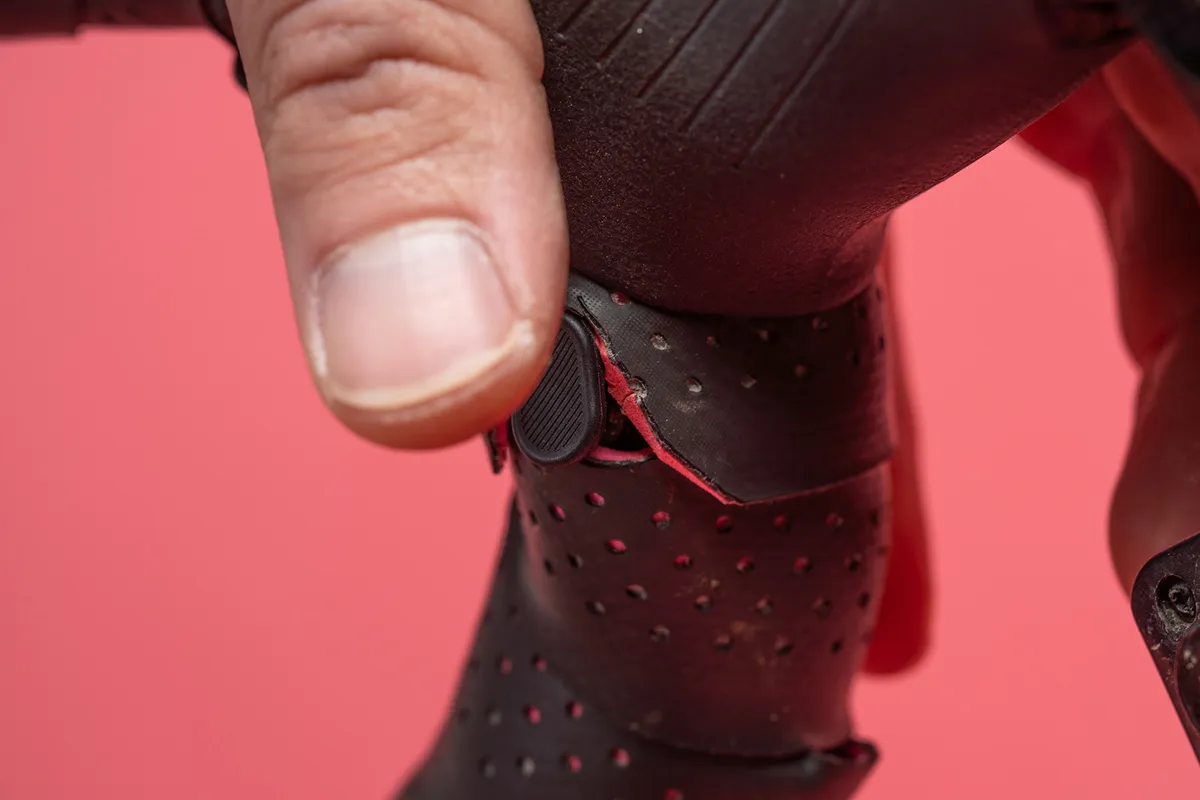
Through this, the shifter button’s wire is passed to the bar plug. The bar plug requires a tiny Torx T5 driver to fit securely (included).
You’ll then need to place the shifter button in a suitable position and secure the wire to the bare bar. I put mine just below the rubber hood cover, on the inside of the bar – just reachable by my thumb when on the hoods.
I then needed to re-tape my bars and cut (clearly not very well) the tape around the button.
I have seen people place the button under the rubber hood cover and cut a hole, however I didn’t want to commit to this for my temporary test period.
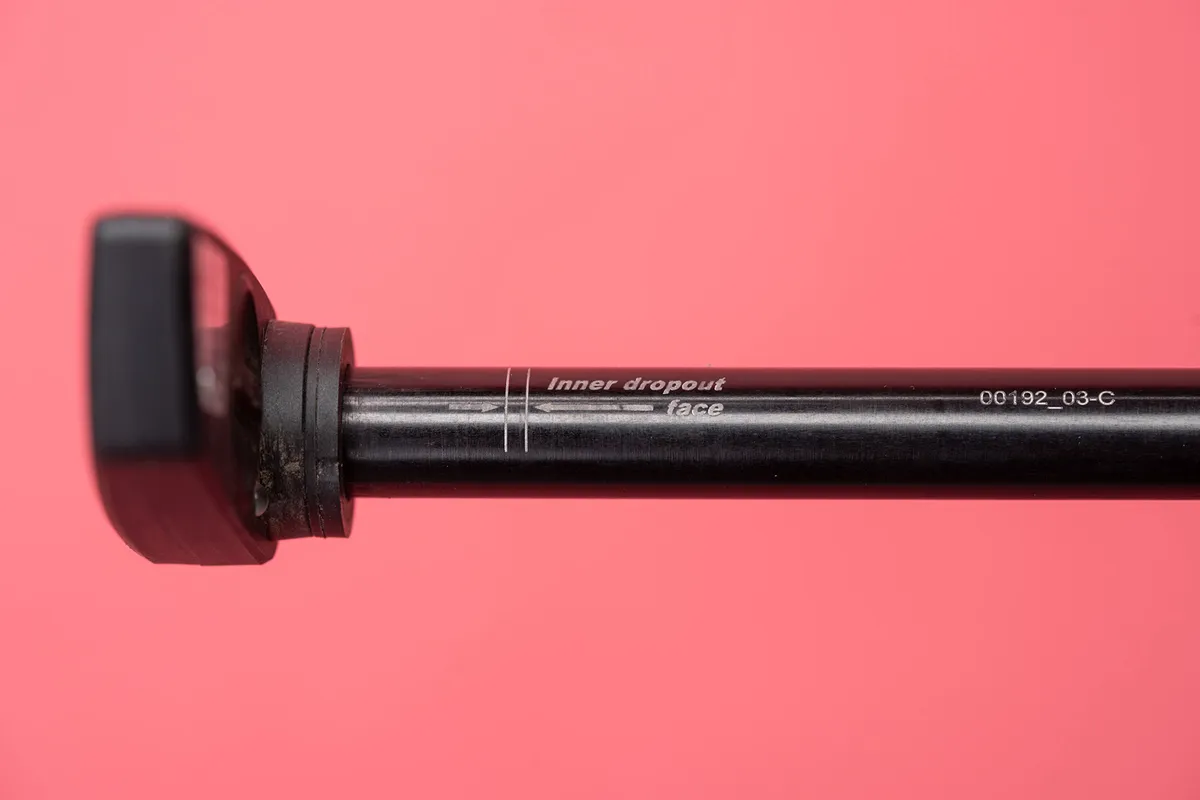
The proprietary cassette fits to the hub in a normal manner, with a regular cassette lockring fitting tool. The same tool, and a chain whip, are required for removal.
Pairing the bar plug and the axle together is a simple process, but does require depressing a very small button on the bar plug and axle, which is difficult to do – the only drawback in the process.
The shifter and axle should be paired when you purchase the system, though.
It is also possible to pair the system to the phone app.
Classified Powershift performance
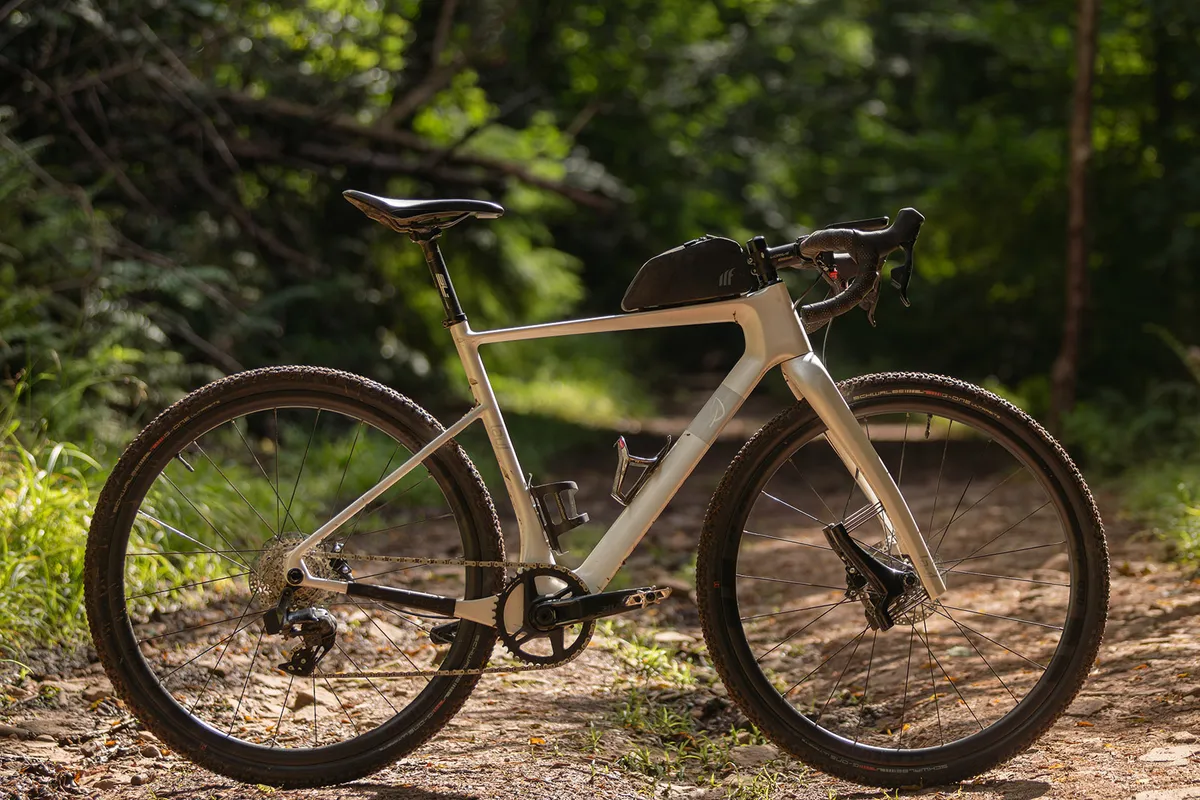
I tested the wheels on a Lauf Seigla gravel bike over a period of six months.
I removed a pair of e*thirteen XCX Race Carbon gravel wheels and replaced both with the Classified G30 wheels.
I had been running a 1x12 SRAM Rival groupset with a 10-44t cassette, giving a 440 per cent range, and by using the Classified 11-32t cassette, I ended up with a similar 424 per cent range.
The e*thirteen wheel, plus cassette, weighs 1,161g, while the Classified rear wheel weighs 1,404g. The axle is around 50g heavier than the stock axle I removed, and the bar plug an extra 18g. I removed six links from my chain, saving 15g.
As such, I added 296g to my bike, as well as numerous extra potential gear ratios.
Without having removed a 2x system, direct comparisons are difficult to draw. However, a SRAM Rival front derailleur, plus battery, is around 180g, while the difference between a 1x chainset and a 2x chainset is around 40g. Potentially, I could have added just 76g.
Setting the system up took some time and needed careful measuring. However, by following Classified’s instructions carefully, I was able to get the system up and running without many dramas (and this is coming from a mechanic with potatoes for hands).
Classified Powershift shifting performance
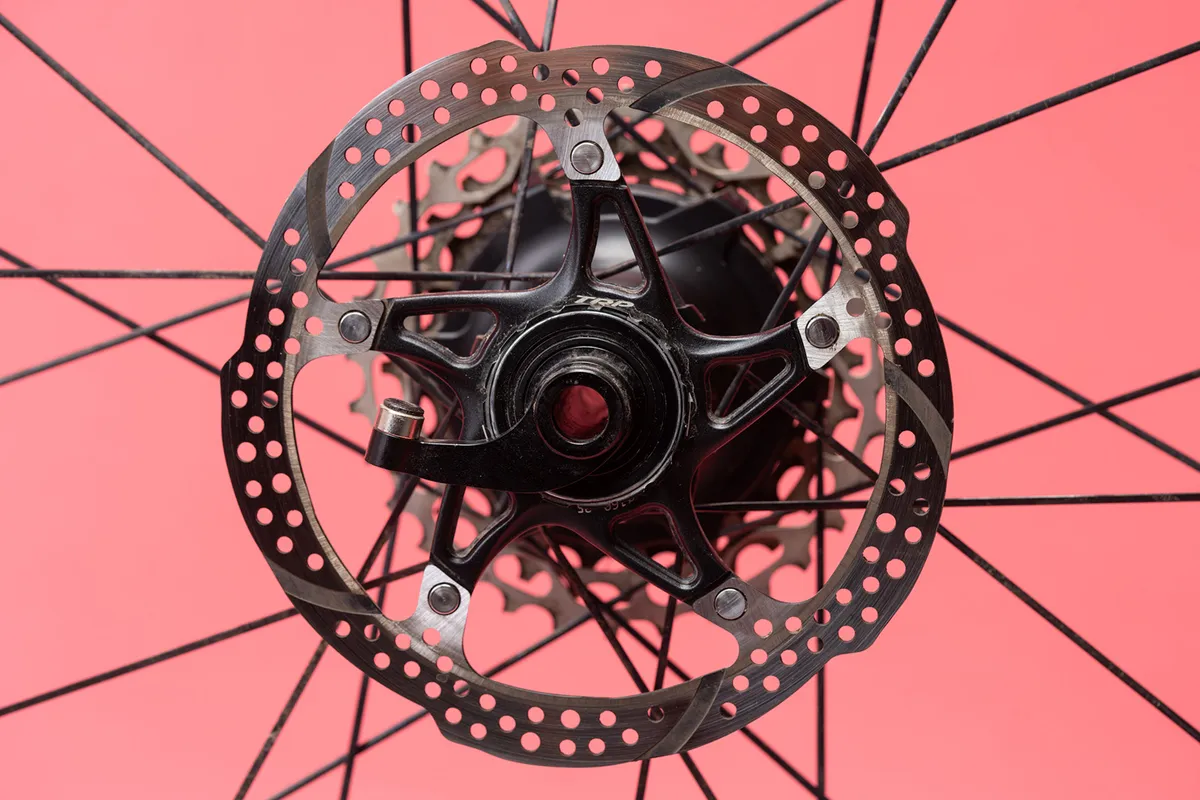
The shifting performance of the hub is exemplary.
The shifter button is similar in size to SRAM or Shimano satellite shifters and is well-placed.
It was easy to find with my thumb, whether I was cruising or putting down an effort.
The button’s throw is small, so it only needs a small knock to actuate the shift. However, I’d like it to have a more defined ‘click’ when pressed, to give that little extra finger-based feedback.
Once you click it, the shift at the rear is effectively instant. Classified’s claims of a 150ms shift speed, while not measurable with a stopwatch, seem realistic.
I shifted it when I was laying down a 900-watt power sandwich, to see how it would cope.
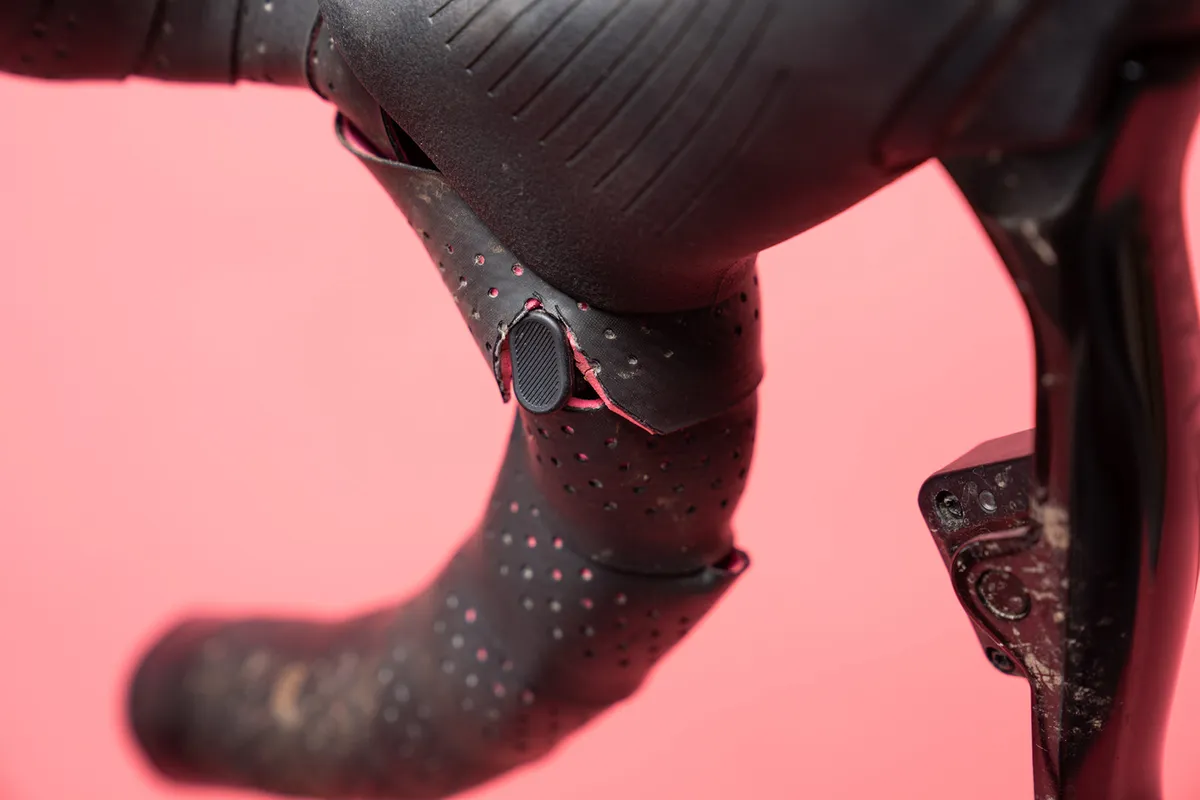
There’s no delay or mechanical grumbling – but you'll notice the super-quick shift gives your legs more grief because their cadence has to change immediately.
While this sensation is similar to a double-chainring setup, there’s a smoother transition between cadences as your chain moves from one ring to another.
In common with most internal gear hubs, it's also possible to shift while you’re not pedalling – either when you know you’re about to hit a steep climb while descending, or when switching into an easy gear at traffic lights. This is very handy in practice.
The impact of fitting the system is that I shift my rear gears more frequently than I did before – it’s much easier to get the ‘right’ gear for the speed and effort I’m putting in.
I use the hub to quickly drop into a lower gear on sudden inclines, rather than bashing through a load of gears at once at the back.
At the same time, the closer ratios of my smaller cassette means I’m using the derailleur shifter more frequently, because it’s more likely that there’s a ratio to match what my legs really want to do.
For the type of riding I do, I think I should have gone for the 11-40t cassette, because this would have given me a wider range of ratios (530 per cent), more akin to the 10-50t cassette I prefer on gravel bikes.
Classified Powershift hub TLC
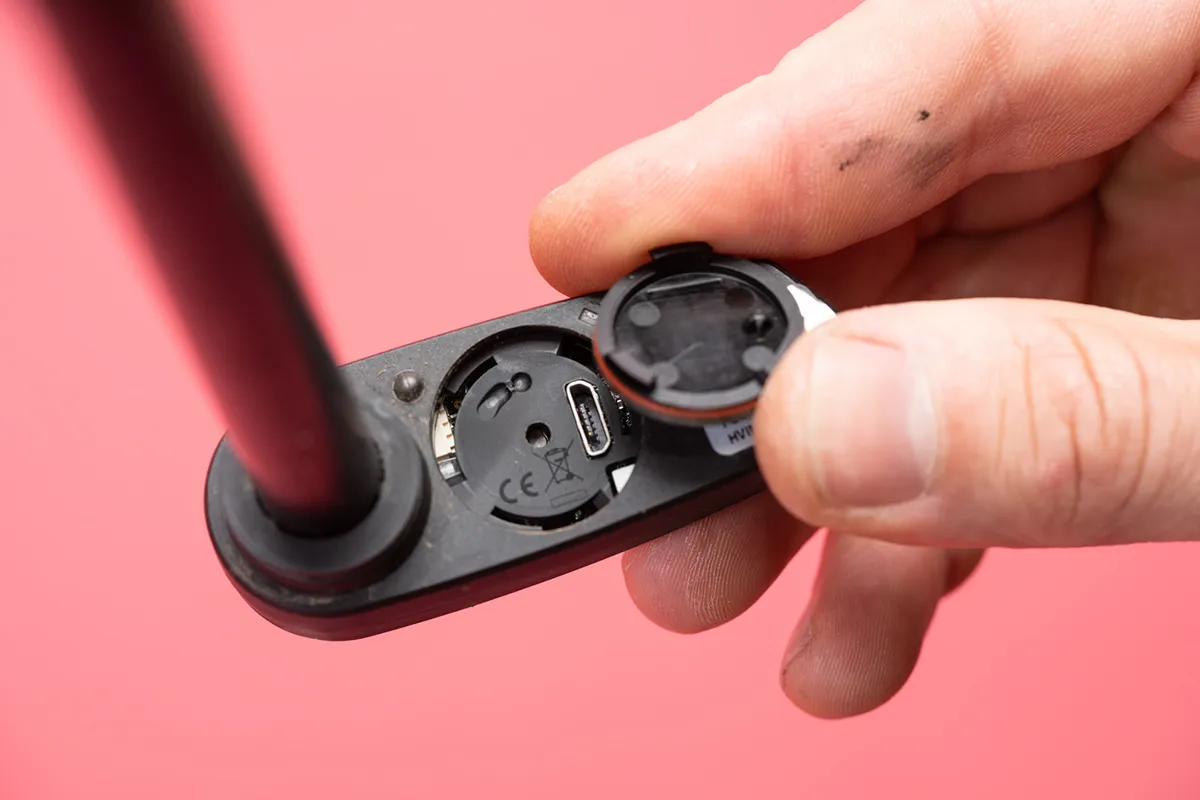
I’ve had no reliability issues with the system yet, despite riding through some very unpleasant conditions. If not fully submerged, the puddle-snorkling my bike has suffered through has certainly ensured the hub has had a thorough soaking.
In terms of care and maintenance, I’ve not needed to do anything other than lube the chain and charge the axle’s battery.
I have (sympathetically) pressure-washed the system with no issues, though I would be wary of pointing the spray directly at the axle’s lever body – the battery cover only has a simple O-ring seal.
How efficient does the Classified hub feel in use?

I’ve been lucky to use a number of planetary systems in the past – I owned a Rohloff for a while, and have ridden Shimano’s Alfine and Pinion systems too. I’ve never come away overly impressed with their feel through the cranks.
While they purport efficiency figures similar to a traditional drivetrain, I’ve always found they feel sluggish or soupy. In general, I’m not a fan.
The Classified system feels totally different.
I believe it is because there are only two gears to operate, rather than between eight and 14 on the other systems. This should cut drag.
On the road, I would be hard pressed to tell you whether I was in the high or low ratio. The high 1:1 ratio is a direct drive, and so should feel like any other drivetrain.
However, the 0.68 ratio is going through the planetary system. It does so with no discernable drag – certainly when you compare it to mechanical or environmental factors (road/trail surface, chainline, chain lubrication, tyre pressures, etc).
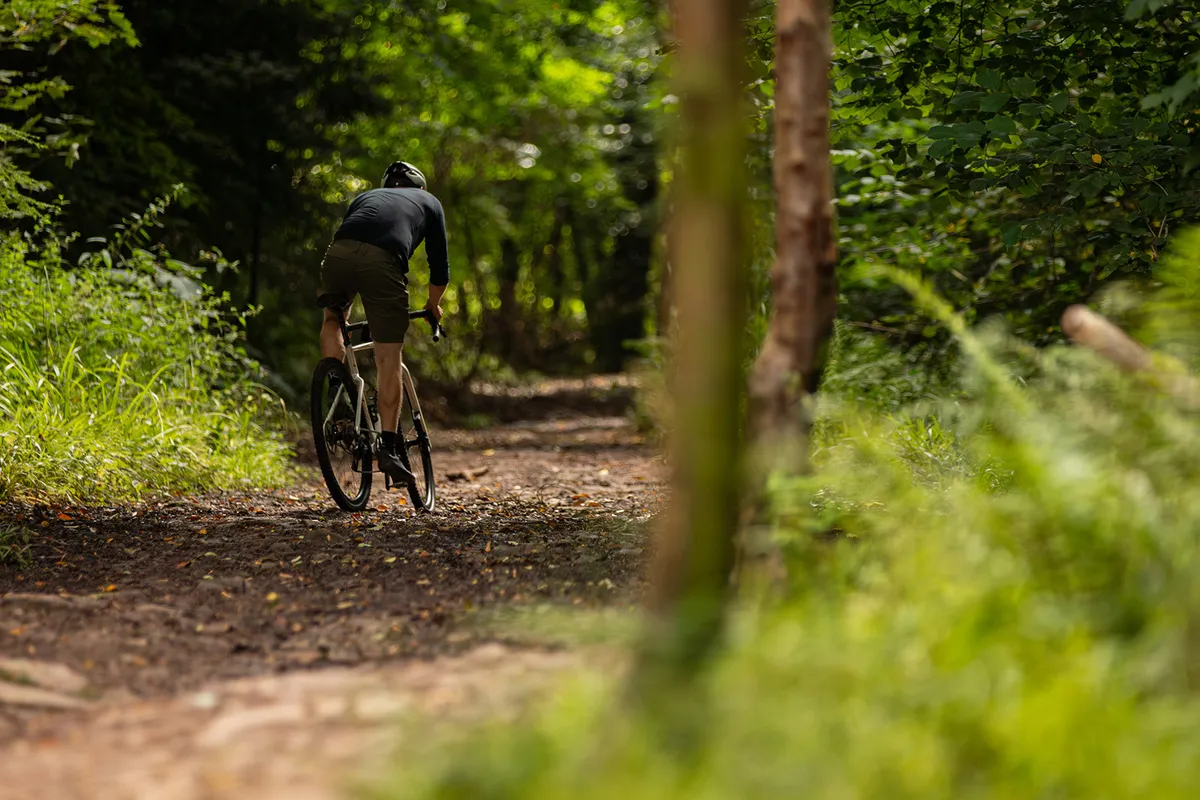
With brands such as Parcours building the hub into their super-aero disc wheels for triathlon and time-trial use, there’s at least some mileage in the efficiency claims. This isn’t a product that would be integrated into products designed for maximum efficiency, if there was notable internal drag.
As such, I would not hesitate to use this system on a race-focused road bike.
It does lead to one criticism – unless I looked down at the cassette to see where on the block I was, I often wasn’t sure if I was in the higher or lower ratio, and would therefore shift the hub in order to work it out.
The thru-axle can connect to computers via ANT+, and so this can be displayed on your screen, though with a Garmin (as I use) it means your SRAM/Shimano gear selection cannot be shown at the same time.
Classified tell me that Wahoo's units can display both the Classified gear and the SRAM or Shimano gear selection at the same time.
How noisy is the Classified Powershift hub?
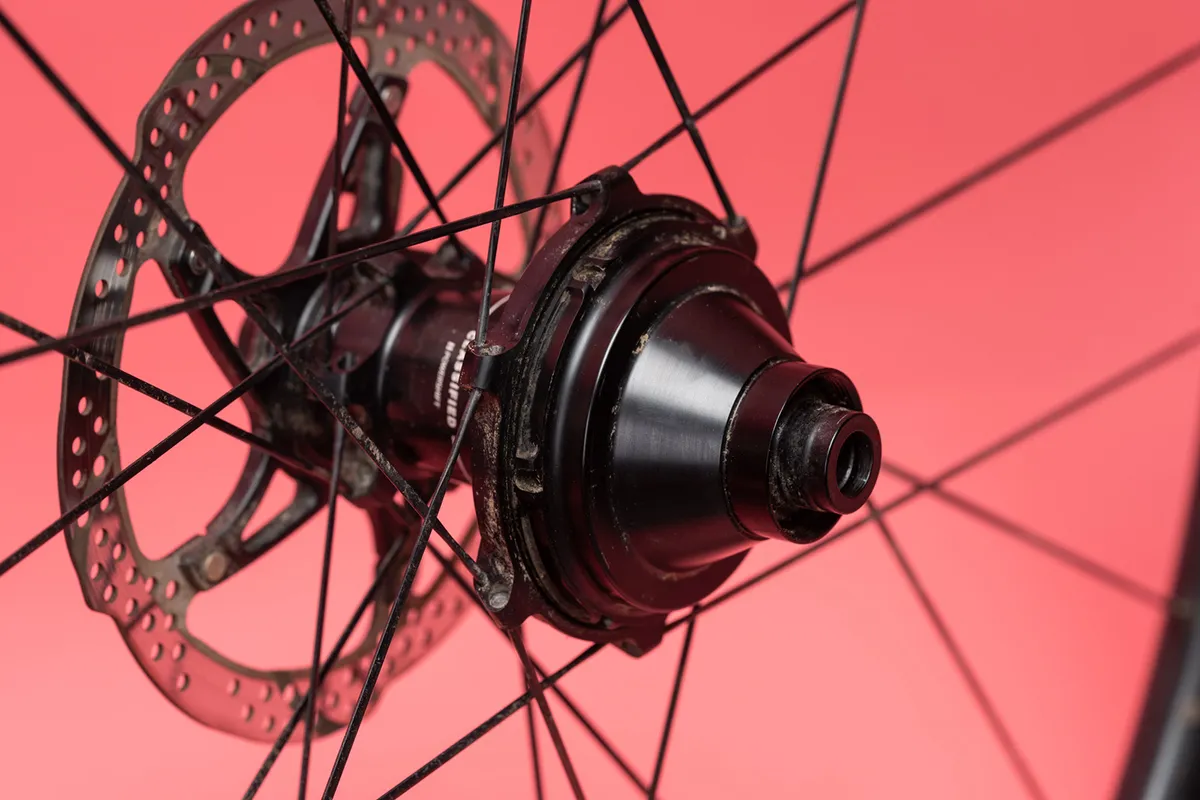
The hub’s action is pretty much silent, too. However, shifting to the lower gear when you’re putting effort through and travelling at speed results in a clang from the freehub. It’s no different from a normal freehub in this respect.
The shifter system wakes up when you get rolling, however I often found it would take a few clicks of the button for the system to come to life.
This improves with a charge, but if the button doesn’t work the first time on a ride, it just needs a couple more clicks. Once shifting, I never found the shifter stopped working mid-ride.
In terms of battery life, Classified claims 10,000 shifts per charge. Without having the ability to count the number of shifts, I can’t confirm this.
However, in six months of regular testing, I’ve only needed to charge the axle battery once.
The coin battery in the bar plug end is still going strong.
Classified Powershift cassette performance
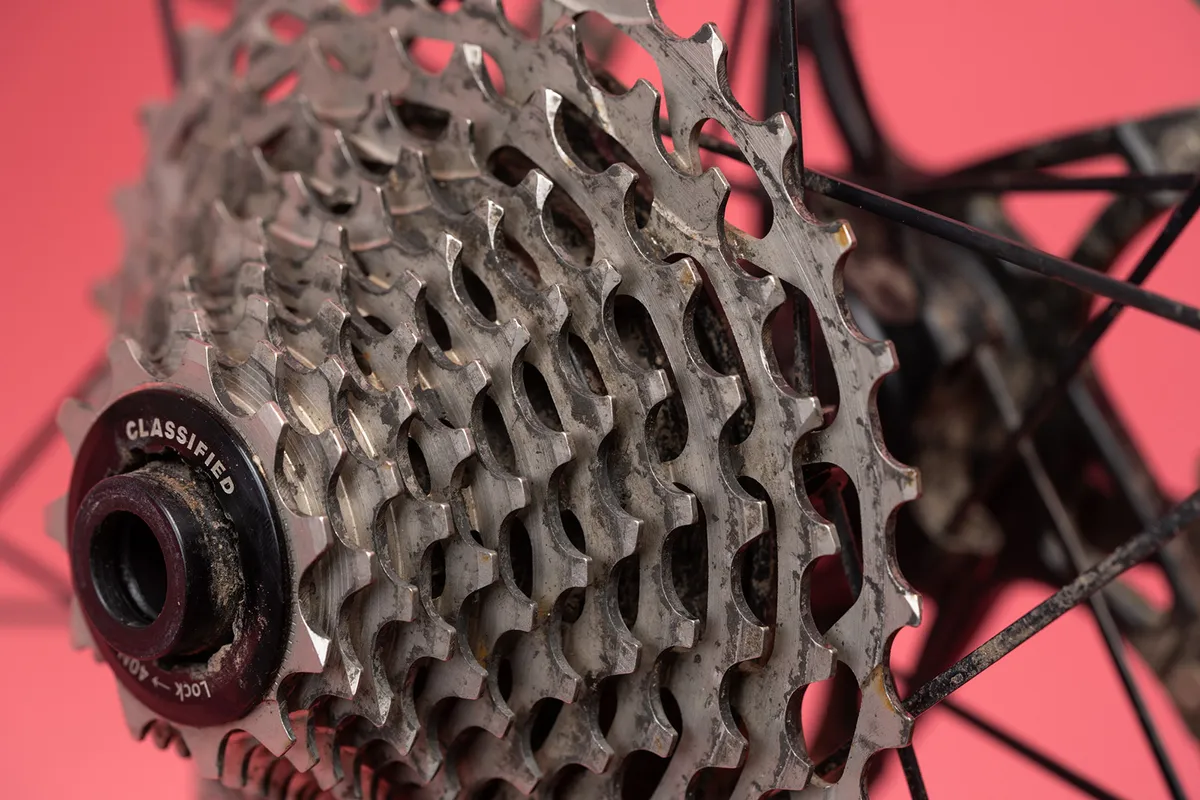
With the hub’s shifting performance out of the way, it’s now the turn of the cassette.
SRAM, Shimano and Campagolo spend a lot of time developing the teeth profiles of their cassettes to ensure smooth shifts. A lot of that tech is also tied up in complex patents.
Classified’s hubs are designed to work with all systems, and so their shifting ramps have to be universal.
In use, the shifting is not quite as smooth as the SRAM cassette I removed from the bike, especially when you’re exerting efforts.
The feeling through the cranks as the chain moves from one sprocket to another is not as fluid.
However, the shifting is still relatively smooth and quiet, compared to budget drivetrains, and those from a few years ago.
Add in some gravelly dirt, and I don’t think you can really criticise Classified for the shift performance.
Classified Powershift bottom line
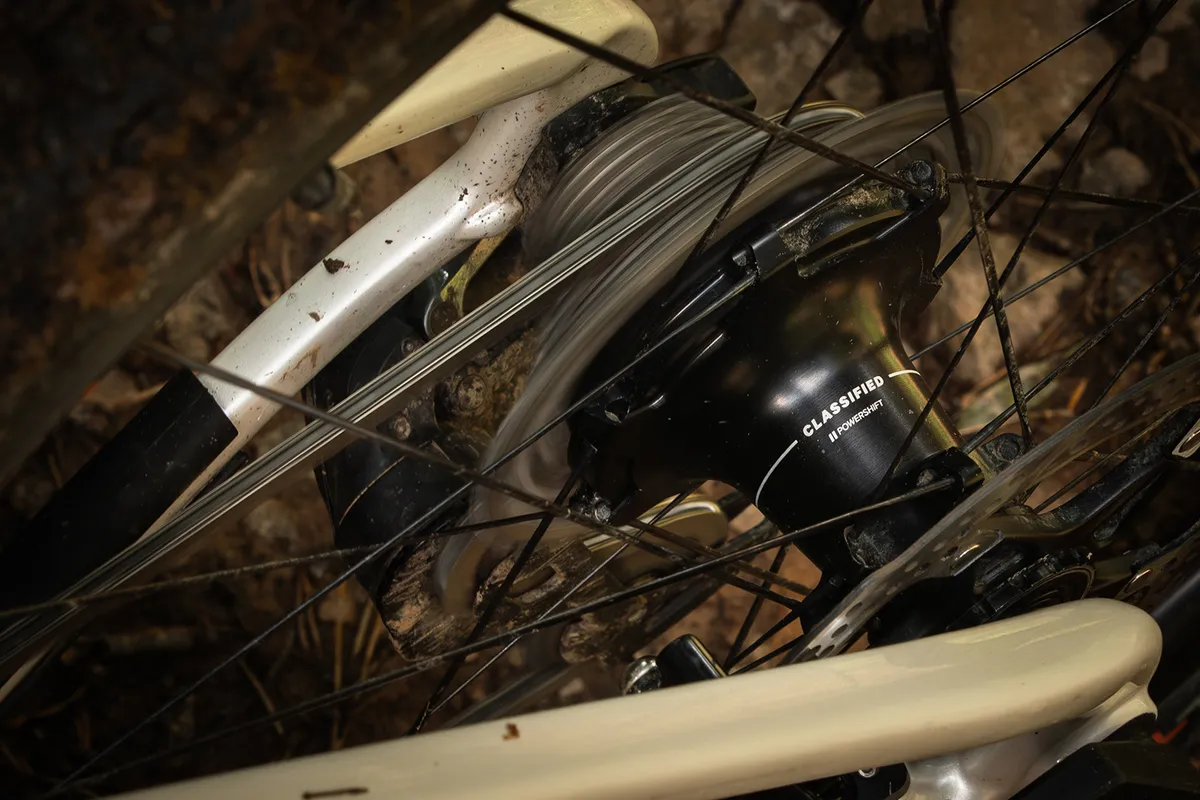
I’m confident in saying that the Powershift hub is a fantastic bit of kit.
The performance of the hub itself is second to none, with an incredibly quick shift that ignores how much power you’re putting through the cranks.
As such, it’s more reliable, smooth and mechanically sympathetic than that of any traditional 2x system I have used.
I prefer the aesthetics of a 1x drivetrain, and the lack of a front derailleur reduces maintenance too.
It’s not without fault, though.
I’d love to see SRAM allowing integration with their shifters, and the lack of an ability to display gear selection on your GPS head unit is a shame.
The fitting process is also quite a time-consuming process and requires a bit of concentration to ensure you have everything measured correctly. I'd leave this to the dealer, personally.
There’s also the price – something I’ve not touched on much here. It is expensive, that’s hard to get away from. However, value and cost are personal choices. It's certainly easy to spend this much money on some fresh carbon gravel wheels, without the addition of the gear tech.
If I had the money, I wouldn’t hesitate to fit this to my gravel or road bike because I believe the system is a genuine improvement over a narrower-range 1x system, or a traditional 2x drivetrain.
Product
| Brand | Classified |
| Price | €2599.00 |
Features
| Features | Weight: 744g front, 1208g rear Brake type: Disc Freehub: Classified Hubs: Classified Powershift Rim depth: 30mm Rim internal width: 23mm Rim material: Carbon Spoke count: 24 front, 24 rear Spokes: DT Swiss Aerolite SP Tubeless compatibility: Tubeless compatible Wheel size: 29in/700c |
